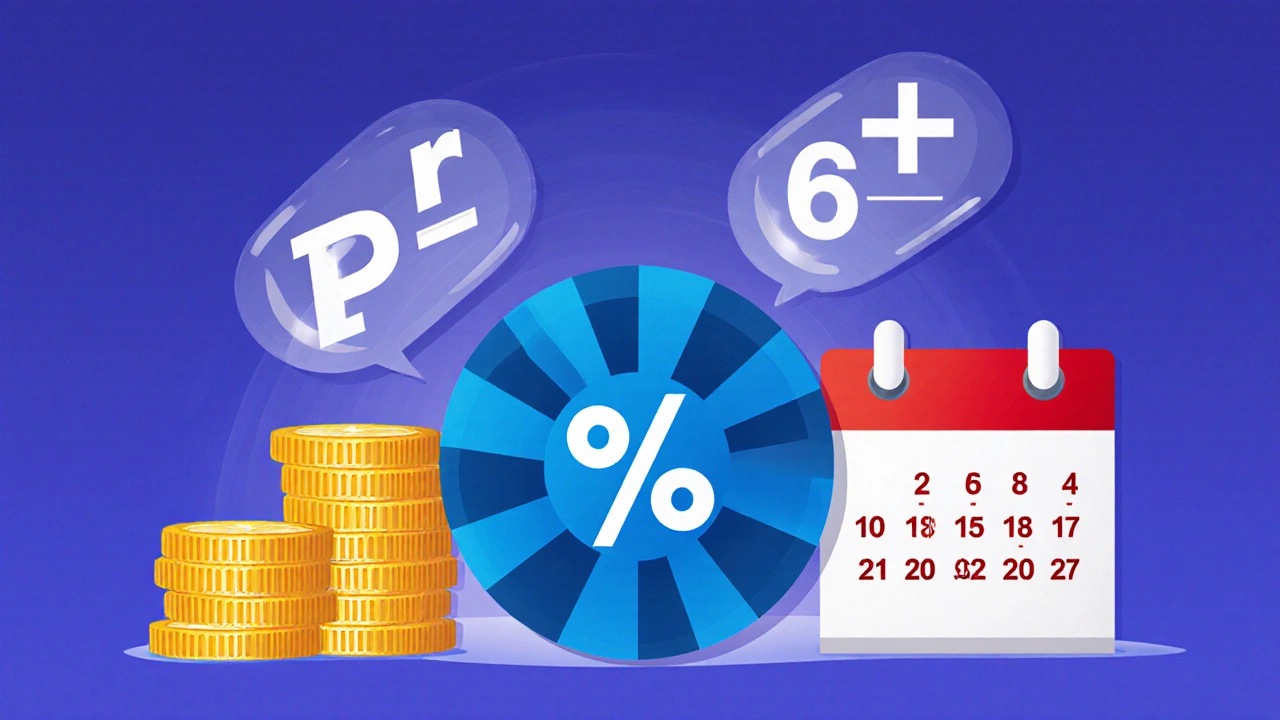EMI Calculator for $50,000 Loan
Your Monthly EMI
Total Repayment: $0.00
Total Interest Paid: $0.00
Ever stared at a loan amount and wondered how much you’ll actually pay each month? For a $50,000 loan the answer isn’t a mystery - it’s the EMI, or Equated Monthly Instalment. Below you’ll get the exact steps, the math, and the tools you need to see the real number on your bank statement.
Quick Takeaways
- EMI depends on three variables: principal, interest rate, and loan tenure.
- The standard EMI formula is EMI = P × r × (1+r)^n / ((1+r)^n - 1).
- For a $50,000 loan at 9% annual interest over 5 years, the EMI is roughly $1,038.
- Increasing the tenure lowers the EMI but raises total interest paid.
- Using an online EMI calculator saves time and reduces manual errors.
What Exactly Is an EMI?
Equated Monthly Instalment (EMI) is a fixed payment amount made by a borrower to a lender at a specified date each month. It combines both principal repayment and interest, ensuring the loan is fully paid off by the end of the agreed tenure. Because the payment stays the same every month, borrowers can budget more easily and lenders have a predictable cash flow.
Key Variables That Shape Your EMI
Three numbers drive the calculation:
- Principal Amount (the original loan sum) - in this case $50,000.
- Interest Rate (the cost of borrowing expressed as a yearly percentage) - usually quoted as an annual percentage rate (APR).
- Loan Tenure (the total number of months over which the loan is repaid) - e.g., 5 years = 60 months.
Changing any of these will immediately shift the EMI up or down.

EMI Formula Explained in Plain English
The math looks intimidating, but each part has a simple meaning:
P = Principal (loan amount) r = Monthly interest rate (annual rate ÷ 12 ÷ 100) n = Total number of monthly payments (years × 12) EMI = P × r × (1+r)^n / ((1+r)^n - 1)
Let’s break it down with a real‑world example.
Step‑by‑Step EMI Calculation for a $50,000 Loan
Assume you take a personal loan of $50,000 at an annual interest rate of 9% and you want to repay it over 5 years (60 months).
- Convert the annual rate to a monthly rate:
- 9% ÷ 12 = 0.75% per month
- 0.75% ÷ 100 = 0.0075 (this is r)
- Identify n - total months = 5 × 12 = 60.
- Plug values into the formula:
EMI = 50,000 × 0.0075 × (1+0.0075)^60 / ((1+0.0075)^60 - 1)
- Calculate the power term:
(1+0.0075)^60 ≈ 1.558
- Finish the math:
EMI ≈ 50,000 × 0.0075 × 1.558 / (1.558 - 1) EMI ≈ 50,000 × 0.011685 / 0.558 EMI ≈ 584.25 / 0.558 EMI ≈ $1,047
Rounded to the nearest rupee, you’ll pay about $1,047 per month. Over 60 months you’ll have paid $62,820, meaning $12,820 of interest.
How Different Rates and Tenures Change the EMI
| Interest Rate (Annual) | Tenure (Years) | Monthly EMI | Total Repayment |
|---|---|---|---|
| 7% | 3 | $1,546 | $55,656 |
| 7% | 5 | $990 | $59,400 |
| 9% | 5 | $1,047 | $62,820 |
| 12% | 7 | $973 | $81,516 |
Notice how a lower rate dramatically cuts both EMI and total interest, while a longer tenure reduces the monthly load but pushes total cost up.
Using an Online EMI Calculator - Why It Saves You Time
Manual maths is fine for a one‑off check, but most borrowers need quick answers for multiple scenarios. An online loan EMI calculator lets you:
- Enter principal, rate, and tenure with a few clicks.
- See an amortization schedule that breaks down interest vs. principal each month.
- Compare “what‑if” situations instantly - e.g., what if you prepay part of the loan?
Many bank websites, fintech apps, and independent finance portals offer free calculators. Just verify that the tool uses the standard EMI formula and includes any processing fees if you want a more realistic total cost.

Tips to Reduce Your EMI Without Changing the Loan Size
- Negotiate a lower interest rate. A reduction of just 0.5% can shave $50‑$60 off a monthly payment.
- Opt for a higher tenure only if you need cash‑flow relief. Remember you’ll pay more interest overall.
- Make pre‑payments. Even a small lump‑sum reduces the outstanding principal, which in turn drops future EMIs (or shortens the loan term).
- Check for hidden fees. Some lenders bundle processing or insurance charges into the EMI. Ask for a clear breakdown.
Common Mistakes When Calculating EMI
- Using the annual interest rate directly instead of converting to a monthly rate.
- Ignoring the impact of compounding frequency - most loans use monthly compounding.
- Forgetting to add processing fees to the principal, which inflates the actual EMI.
- Assuming a lower EMI means a better deal; longer tenures often hide higher total interest.
Next Steps - Put the Numbers to Work
Now that you know how to arrive at the exact EMI for a $50,000 loan, you can:
- Use a reputable online calculator to test multiple rates and tenures.
- Contact lenders with the EMI figures you’ve calculated; they’ll often match or improve on them if you’re prepared.
- Build a simple spreadsheet that auto‑updates the EMI when you tweak any variable - great for scenario planning.
Armed with a clear picture, you’ll negotiate from a position of knowledge, avoid surprise payments, and keep your budget on track.
Frequently Asked Questions
How do I calculate EMI for a loan with a variable interest rate?
Variable‑rate loans require you to recalculate the EMI each time the rate changes. Use the same formula but plug in the new monthly rate and remaining tenure. Many online calculators let you input a schedule of rate changes and will output the adjusted EMI for each period.
Can I shorten the loan tenure after I start repaying?
Yes, most lenders allow pre‑payment or tenure reduction. When you reduce the remaining months, the EMI is re‑computed based on the outstanding principal, current rate, and the new, shorter tenure. This lowers total interest paid.
Is the EMI the same for all types of loans?
The basic EMI formula applies to most amortizing loans - personal loans, car loans, home loans, etc. However, some loans (like interest‑only mortgages) calculate payments differently, so always verify the loan’s specific repayment structure.
Do processing fees affect the EMI?
If a lender adds processing fees to the loan amount, they become part of the principal and increase the EMI. If fees are taken upfront, they don’t affect the EMI but reduce the net amount you receive.
What is the difference between APR and the interest rate used in EMI?
APR (Annual Percentage Rate) includes the nominal interest rate plus certain fees and charges, giving a more complete cost of borrowing. EMI calculations typically use the nominal rate; if you want a true cost comparison, convert APR to an effective monthly rate before plugging it into the formula.
